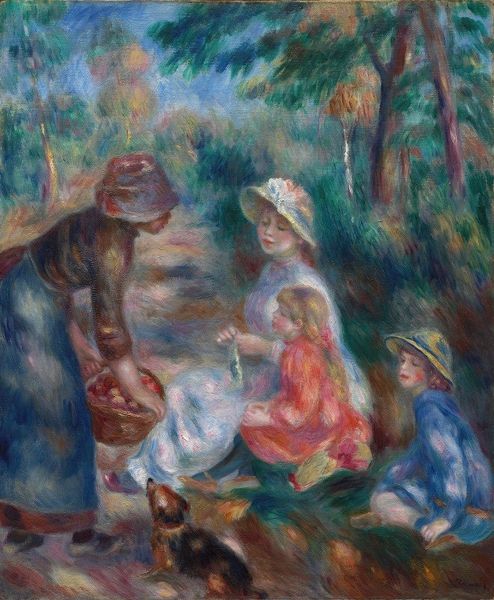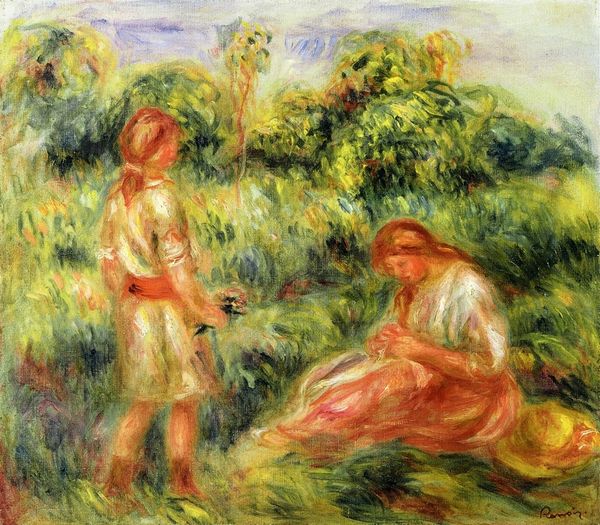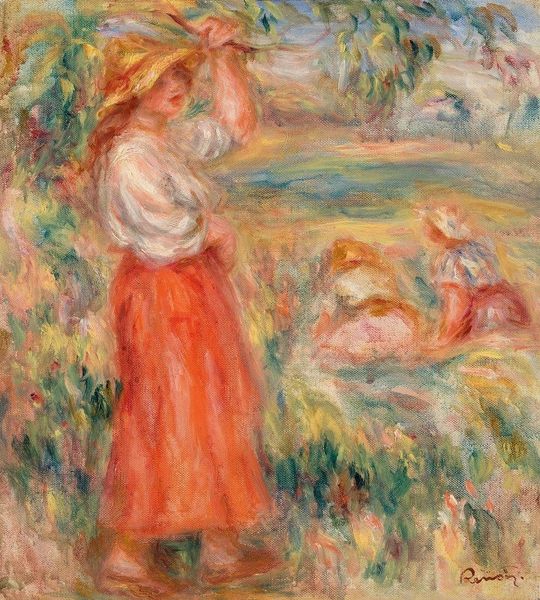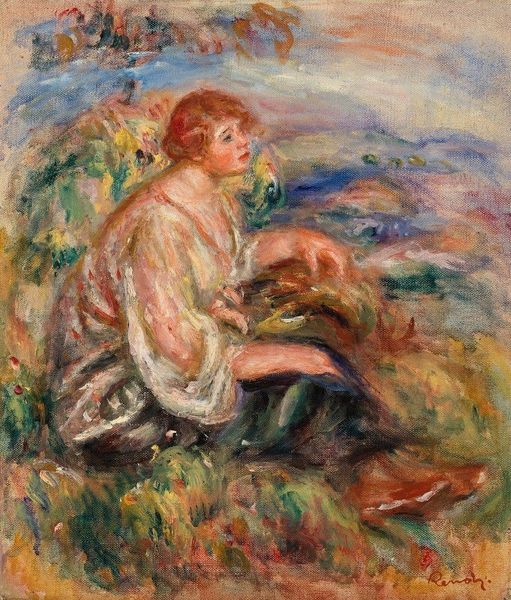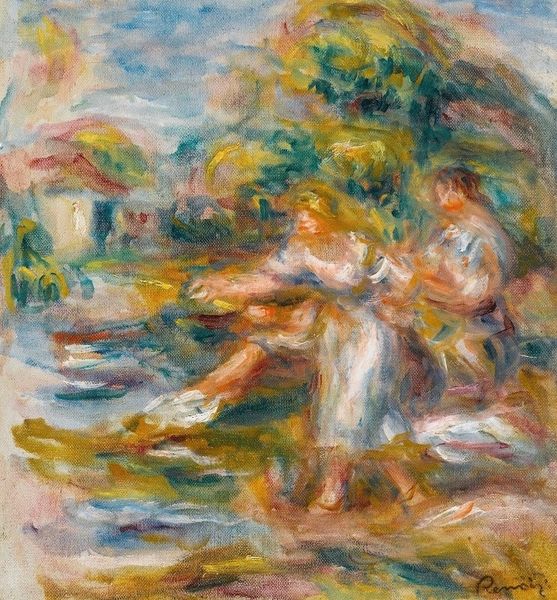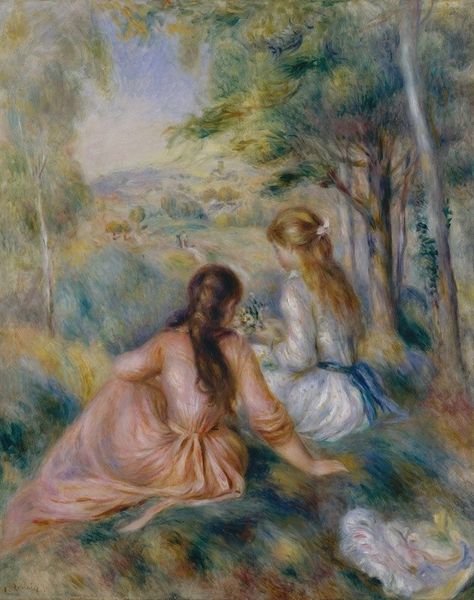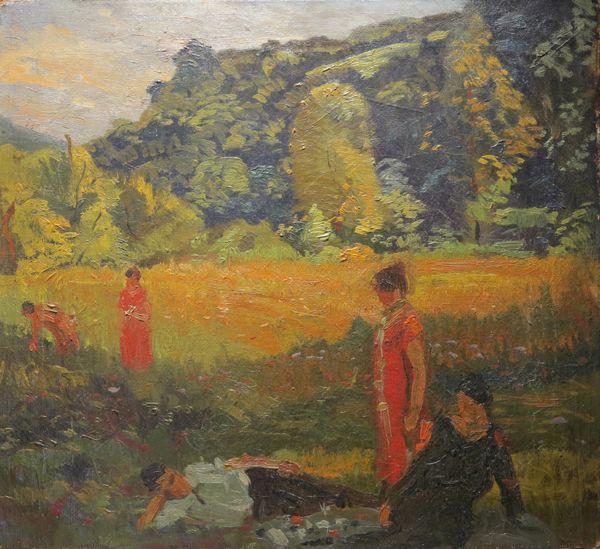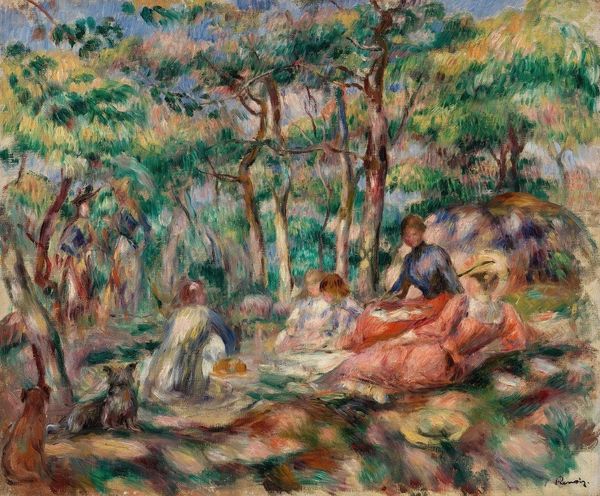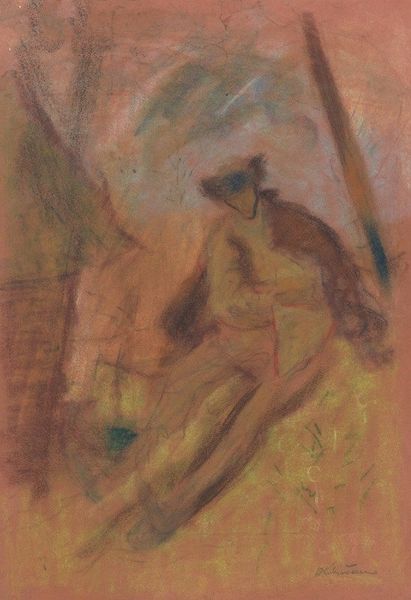
Copyright: Public Domain: Artvee
Editor: Here we have Pierre-Auguste Renoir’s "Deux Filles Dans Un Pré", painted around 1910 using oil paint. It evokes a dreamlike moment. What stands out is the flattening of perspective, where the figures almost merge with the landscape. How do you interpret this work? Curator: I see this painting as a lens through which we can examine the social position of women in Impressionist art. Renoir often depicted women in leisure, but what does it mean that these figures are unnamed and somewhat anonymous, existing within a pastoral setting? Consider how class and societal expectations shaped their roles. Editor: So, you’re suggesting the painting reflects limitations placed on women, even in moments of leisure? Curator: Precisely. While seemingly idyllic, we must ask, whose idyll is this? Renoir, as a male artist, is framing the scene. Do we see these women as individuals, or are they embodiments of an idealized femininity meant for consumption? The loose brushwork, typical of Impressionism, adds to this feeling, obscuring their individual features. Does this invite intimacy or create distance, reinforcing societal norms? Editor: It's interesting how the lack of precise detail can both invite the viewer in and maintain a certain distance. Could their clothing – the hats, the style – provide insight into their class? Curator: Absolutely. While their attire suggests a certain level of comfort, it's also important to note that fashion of the time dictated very specific roles. They're "dressed" for leisure in a manner dictated by societal expectations for bourgeois women. Can you see how that informs our understanding of their positioning within this 'natural' landscape? Editor: I never really thought about Impressionism reflecting social structure, it always felt… purely aesthetic. Thanks, that opens a whole new perspective! Curator: It’s through these critical interrogations that we challenge conventional art historical narratives and appreciate art's power in shaping cultural perspectives.
Comments
No comments
Be the first to comment and join the conversation on the ultimate creative platform.
